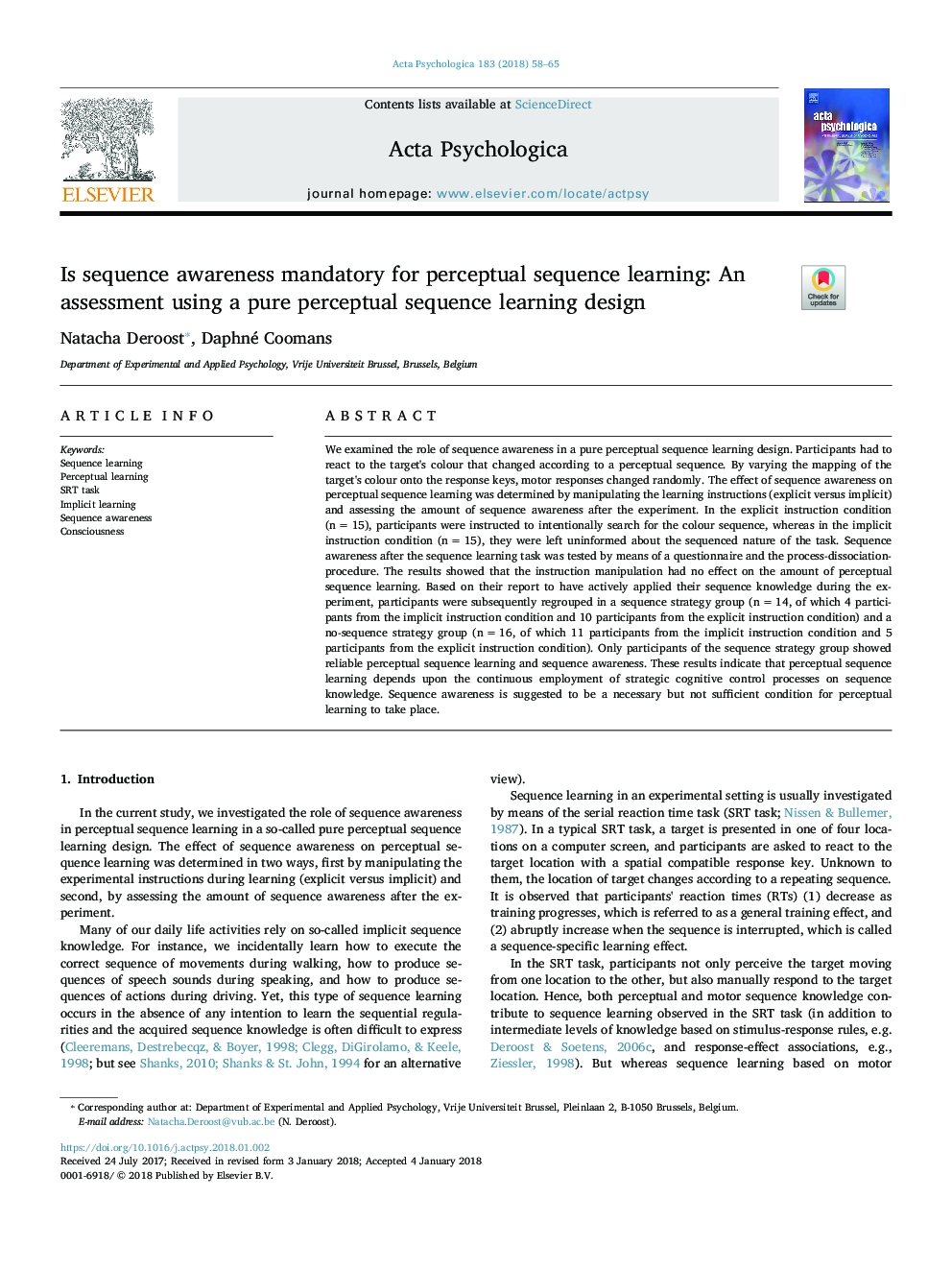| Article ID | Journal | Published Year | Pages | File Type |
|---|---|---|---|---|
| 7276839 | Acta Psychologica | 2018 | 8 Pages |
Abstract
We examined the role of sequence awareness in a pure perceptual sequence learning design. Participants had to react to the target's colour that changed according to a perceptual sequence. By varying the mapping of the target's colour onto the response keys, motor responses changed randomly. The effect of sequence awareness on perceptual sequence learning was determined by manipulating the learning instructions (explicit versus implicit) and assessing the amount of sequence awareness after the experiment. In the explicit instruction condition (nâ¯=â¯15), participants were instructed to intentionally search for the colour sequence, whereas in the implicit instruction condition (nâ¯=â¯15), they were left uninformed about the sequenced nature of the task. Sequence awareness after the sequence learning task was tested by means of a questionnaire and the process-dissociation-procedure. The results showed that the instruction manipulation had no effect on the amount of perceptual sequence learning. Based on their report to have actively applied their sequence knowledge during the experiment, participants were subsequently regrouped in a sequence strategy group (nâ¯=â¯14, of which 4 participants from the implicit instruction condition and 10 participants from the explicit instruction condition) and a no-sequence strategy group (nâ¯=â¯16, of which 11 participants from the implicit instruction condition and 5 participants from the explicit instruction condition). Only participants of the sequence strategy group showed reliable perceptual sequence learning and sequence awareness. These results indicate that perceptual sequence learning depends upon the continuous employment of strategic cognitive control processes on sequence knowledge. Sequence awareness is suggested to be a necessary but not sufficient condition for perceptual learning to take place.
Related Topics
Life Sciences
Neuroscience
Cognitive Neuroscience
Authors
Natacha Deroost, Daphné Coomans,
